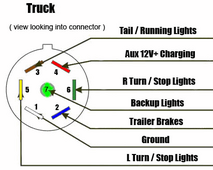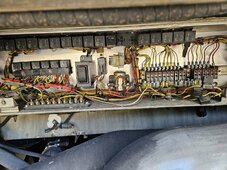featherlite
Solar Enthusiast
Is it a reasonable possibility that a voltage spike from one of the electrical devices in my trailer has flowed into my truck’s electrical system?
Respecting my 2018 Silverado truck, both the Throttle Body Motor ($500 to replace) and the Active Grill Shutter Motor ($1,100 to replace) failed last week. It seems odd to me that they both failed around the same time. The truck’s mileage is 78k.
I not so long ago installed a Victron Orion-Tr Smart DC-DC Charger Isolated 12/12/18, in my trailer. I have only used the Orion a few times.
To install the Orion, I ran a 2AWG positive wire from the Orion to the positive battery post on my truck starter battery (properly fused), and a shorter 2AWG wire from a frame member at the rear of the truck to the Orion. I ran 6AWG wires from the Orion to the respective positive and negative bus bars servicing my 12v Lifepo4 battery system located in the trailer.
Other Victron MPPT chargers and inverters are also connected to those same bus bars.
My chargers are all set at 13.8v, bulk and absorption.
If so, I wonder if the voltage spike was generated by the Orion or from one of the other devices which, in turn, might have fed the spike through the Orion to the truck.
I am afraid to continue using the Orion.
I would appreciate your thoughts.
Respecting my 2018 Silverado truck, both the Throttle Body Motor ($500 to replace) and the Active Grill Shutter Motor ($1,100 to replace) failed last week. It seems odd to me that they both failed around the same time. The truck’s mileage is 78k.
I not so long ago installed a Victron Orion-Tr Smart DC-DC Charger Isolated 12/12/18, in my trailer. I have only used the Orion a few times.
To install the Orion, I ran a 2AWG positive wire from the Orion to the positive battery post on my truck starter battery (properly fused), and a shorter 2AWG wire from a frame member at the rear of the truck to the Orion. I ran 6AWG wires from the Orion to the respective positive and negative bus bars servicing my 12v Lifepo4 battery system located in the trailer.
Other Victron MPPT chargers and inverters are also connected to those same bus bars.
My chargers are all set at 13.8v, bulk and absorption.
If so, I wonder if the voltage spike was generated by the Orion or from one of the other devices which, in turn, might have fed the spike through the Orion to the truck.
I am afraid to continue using the Orion.
I would appreciate your thoughts.





